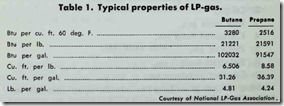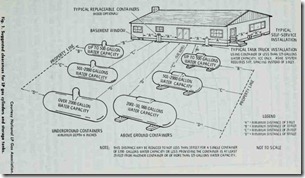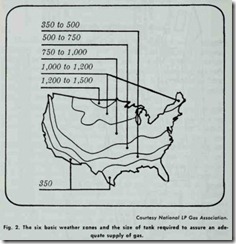Only the principal characteristics of those heating fuels used for domestic heating purposes will be considered in any great detail in this chapter. Descriptions of firing methods for the more commonly used heating fuels are found in Chapter I (OIL BURNERS), Chapter 2 (GAS BURNERS), Chapter 3 (COAL
FIRING METHODS), Volume 3, and Chapter 3, Volume 3 (STOVES, FIREPLACES, AND CHIMNEYS).
Although electricity is used as a source of power for electric fired furnaces , it properties are such that it cannot be regarded as a heating fuel in the sense that the term is being used here; therefore it is not included in this chapter. It is, however, de scribed more fully in Chapter 2 (HEATING FUNDAMEN TALS), Chapter 9 (ELECTRIC HEATING SYSTEMS), and Chapter 14 (ELECTRIC-FIRED FURNACES).
Heating fuels can be classified as solid, liquid, or gaseous, depending upon their physical state. Examples of solid fuels are coal and coke. Fuel oils are classified as liquid fuels, and gaseous fuels will include natural gas, manufactured gas, liquified petrol eum gas, and related types.
NATURAL GAS
Natural gas is a generic term commonly applied to those gases found in or near deposits of crude petroleum. It is not con nected with the production of oil, and should always be regarded as a separate and independent entity. Natural gas is piped under pressure from the gas fields to the consumer centers, and these pipe lines now serve a considerable portion of the United States.
Natural gas is the richest of the gases and contains from 80 to 95% methane with small percentages of the other hydrocar bons. The heating value of natural gas varies from 1000 to 1200 Btu’s per cubic foot, with the majority of gases averaging about 1000 Btu’s per cubic foot. The caloric value will depend upon the locality.
Natural gas can be divided into three different basic types:
1. Associated gas,
2. Nonassodated gas,
3. Dissolved gas.
Associated gas is a free (undissolved) natural gas found in close contact with crude petroleum . Nonassociated gas is also a free gas but is not found in contact with the crude petroleum deposit. As the name suggests, dissolved gas is found in solution in the crude petroleum.
MANUFACTURED GAS
A manufactured gas is any gas made by a manufacturing process. Raw materials used in the production of manufactured gas include coal, oil, coke, natural gas, or one of the other manufactured gases. For example, coal gas is made by dis tilling bituminous coal in either retorts or by-product coke ovens. Often several of these raw materials are used together as a base for the production of a manufactured gas.
The types of manufactured gases commercially available in- clude:
1. Coal gas or by-product coke-oven gas,
2. Oil gas,
3. Blue water gas,
4. Carbureted water gas,
5. Producer gas,
6. Reformed natural gas,
7. Liquified petroleum gas.
Most of these gases have low calorific values (generally be tween 500 and 1000 Btu’s per cubic foot), and are produced
primarily for industrial use. Producer gas and liquified petroleum gas are also used for domestic purposes. The former may be used alone or in combination with other gases. Of all the manu factured gases, liquified petroleum gas enjoys the widest appli cation in domestic heating and cooking.
LIQUIFIED PETROLEUM GAS
Liquified petroleum gas (LP gas) is a hydrocarbon mixture extracted primarily from “wet” natural gas, and sold commer cially as propane, butane, bottled gas, or under a variety of dif ferent brand names. The terms “dry” and “wet” natural gas refer to the gasoline content per 1000 cubic feet. It is regarded as “dry” if it contains less .than 0.1 gallons of gasoline per 1000 cubic feet, and “wet” if it contains more than 0.1 gallons.
Propane is used quite extensively for domestic heating pur poses . It contains 2516 Btu’s per cubic foot (per gallon), or about two and a half times the Btu content of methane (natural gas). Table 1 compares the typical properties of propane and butane. Unlike natural gas, propane is heavier than air. An un detected leak can be quite dangerous, because the escaping gas will accumulate in layers at floor level. An explosion can be set off if the gas reaches the level of the pilot flame in the furnace.
Propane is frequently delivered in bulk and stored in large, tationary tanks holding from 100 to 1000 gallons. It is then piped into the home or building in much the same manner as natural gas. For small usage (e.g. trailers or homes that use only enough gas for one or two appliances), the LP gas is delivered in 5 to 25 gallon cylinders . The suggested clearances for LP gas cylinders and storage tanks are shown in Fig. 1. The size of the storage tank required by an installation depends upon the weather zone in which it is located (Fig. 2). Recommended tank sizes are given in Fig. 2.


